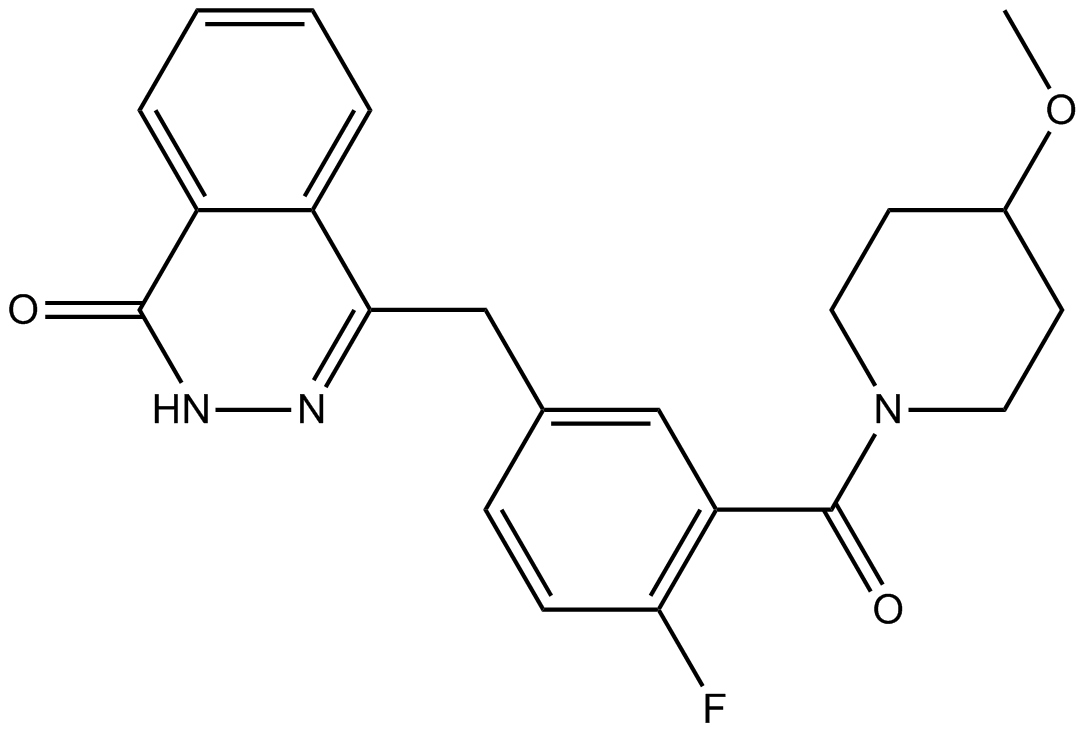AZD2461 |
| Catalog No.GC17965 |
A PARP inhibitor
Products are for research use only. Not for human use. We do not sell to patients.

Cas No.: 1174043-16-3
Sample solution is provided at 25 µL, 10mM.
AZD2461 is a novel PARP inhibitor with IC50 value of 5nM [1].
Poly (ADP-ribose) polymerase (PARP) is a family of proteins involved in a number of cellular processes involving mainly DNA repair and programmed cell death [1].
In SKBR-3 line and MCF-7 line, AZD2461 was cytotoxic and reduced numbers of viable cells in a concentration- and time-dependent manner. Also, through inhibiting PARP-1, AZD2461 increased MCF-7 cells and SKBR-3 cells in the G2 phase at the expense of proportions in the S- phase, respectively [2].
In order to investigate whether long-term dosing of AZD2461 would be capable of causing eradication or chronic suppression of KB1P tumors, which acquired Pgp-mediated resistance, we tested the response of KB1P tumors to the novel AZD2461. Both AZD2461 and olaparib completely inhibited the PARP activity for several hours, and 24 hours after treatment the amount of PAR returned to baseline levels. These data show that AZD2461 is a novel PARPi with potential to bypass Pgp-mediated resistance to olaparib. With short-term treatment, AZD2461 induces loss of 53BP1 expression in mice with KB1P tumors. Long-term AZD2461 treatment is well tolerated and doubled the median relapse-free survival [1].
Reference:
[1]. Jaspers JE, Kersbergen A, Boon U, et al. Loss of 53BP1 Causes PARP Inhibitor Resistance in Brca1-Mutated Mouse Mammary Tumors. Cancer Discov, 2013, 3(1): 68-81.
[2]. Węsierska GJ, Heinzl S. Interactions Between Ataxia Telangiectasia Mutated Kinase Inhibition, Poly(ADP-ribose) Polymerase-1 Inhibition and BRCA1 Status in Breast Cancer Cells. J Cancer Prev. 2014, 19(2): 125–136.
Average Rating: 5 (Based on Reviews and 30 reference(s) in Google Scholar.)
GLPBIO products are for RESEARCH USE ONLY. Please make sure your review or question is research based.
Required fields are marked with *




















